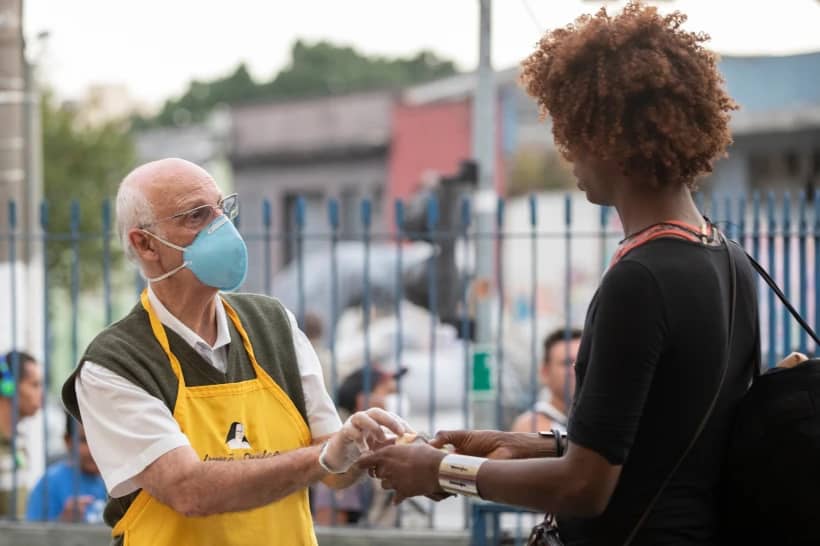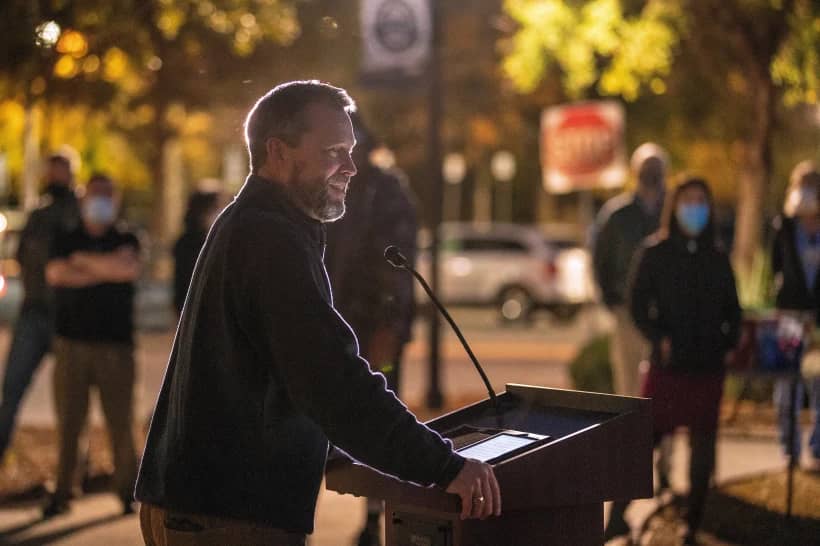CLEVELAND — Affordable housing advocates at Catholic Charities agencies and elsewhere are working intently to help renters access billions of dollars in federal Emergency Rental Assistance funds to prevent a surge in evictions tied to the coronavirus pandemic.
They are frustrated, however, they told Catholic News Service, because the $46.5 billion for rental assistance allocated since December is trickling into communities too slowly to meet the existing need.
“We’ve been trying to work very aggressively with our (diocesan) agencies to try to access the local government sources of eviction prevention money,” said Dominican Sister Donna Markham, president and CEO of Catholic Charities USA.
“Part of the sadness in this, we know that essential to the whole area of the social determinant of health and well-being is housing. When our folks are losing their homes, it just cascades into hunger, mental illness, physical illness, especially in the middle of a pandemic,” she said.
In an email to CNS Aug. 5, a Treasury Department official estimated that about $3 billion had been distributed to renters and landlords through early August.
The billions allocated for Emergency Rental Assistance were included in two legislative measures: $25 billion in a COVID-19 relief and omnibus spending bill passed in December and $21.5 billion in the American Rescue Plan passed in March.
The first allocation to states and localities was completed Feb. 10, the official said. About 40 percent of the funding in the second appropriation was sent to state and local governments by May 7 with the rest expected to be released in the future. The program runs through 2025.
“This program is intended to address the emergency at hand, but also to address an annual eviction crisis that predated the pandemic,” the official said.
In an Aug. 4 news release, the department “reiterated its call for state and local governments operating Emergency Rental Assistance (ERA) programs to speed the delivery of assistance to those in need by eliminating undue documentation burdens.”
Data analyzed by the National Equity Atlas, shows nearly 6.4 million households were behind on rent with rent debt estimated at $21.3 billion through July 7. It includes data gathered from the most recent Census Bureau Household Pulse Survey covering the period of June 23 through July 5.
The atlas is a partnership between Oakland, California-based PolicyLink and the University of Southern California’s Equity Research Institute.
A new 60-day eviction moratorium issued Aug. 3 by the Centers for Disease Control and Prevention will give more time for tenants and landlords to access funds for back rent, social service agency and advocates said. The moratorium pertains to U.S. counties with “substantial and high levels of community transmission” and covers about 90 percent of the U.S. population.
Still, the advocates are pushing for a longer-term solution from Congress so that as much of the emergency funding as possible can be distributed as quickly as possible and people are not struggling to find another place to live as winter approaches because an eviction threat looms.
Government relations staff at the Catholic Charities USA are urging members of Congress to approve broad legislation that would protect tenants from eviction while assuring landlords, especially those with few rental units, are not left without income they need to pay mortgages and make repairs, Markham said.
The CDC announced the new moratorium after Democratic lawmakers, housing advocates and grassroots organizations pressed President Joe Biden’s administration to reinstate tenant eviction protections that expired July 31.
Tenant groups and their advocates feared a sudden onrush of evictions would result at a time when most of the country was seeing a surge in coronavirus cases, largely because of wider transmission of the highly contagious delta variant.
The Catholic Campaign for Human Development-funded Churches United for Fair Housing in Brooklyn, New York, was among those calling for an extension of the moratorium.
Rob Solano, the group’s executive director, said that while the organization welcomed the CDC announcement, the back-and-forth on a moratorium has caused stress among its members, who are largely Latino and Black working-class families, many of whom have lost jobs because of the pandemic.
“This Band-Aid of every two months continues to create anxiety in a global pandemic,” he told CNS.
The moratorium’s future may be in doubt, however.
The Alabama and Georgia chapters of the National Association of Realtors filed a motion in federal court in Washington Aug. 4 seeking to vacate the eviction ban, Politico reported. The motion said that CDC gave in to a “tidal wave of political pressure” from Democrats in issuing the new moratorium.
Association officials have said that half of the nation’s housing providers own a handful of properties and that without rental income, those property owners will face their own financial struggles.
The Alabama group led a legal challenge against the original moratorium. On June 29, the U.S. Supreme Court decided 5-4 to leave the moratorium in place with Justice Brett Kavanaugh casting the deciding vote.
Kavanaugh wrote in a concurring opinion that his decision was made solely because the moratorium was set to expire July 31, and that the remaining time would “allow for additional and more orderly distribution” of emergency rental assistance funds appropriated by Congress.
He also wrote that he believed Congress would have to pass new and clearer legislation to extend the moratorium.
Charles Tassell, chief operating officer of the National Real Estate Investors Association, which represents 40,000 landlords, said about half of the U.S. rental units are owned by people who own less than four units.
Tassell told CNS his organization urges communication between landlords and tenants to stave off eviction. It’s when tenants “go silent” and fail to respond to landlord queries that the threat of eviction rises, he said.
“We advise members that not everybody is going to handle the shock of losing jobs the same way. We tell them to provide resources and to reach out to them, make sure you are communicating,” he explained.
A survey conducted by Avail, a part of Realtor.com, found that between February and May 58.5 percent of landlords said they were not suffering any financial loss because of partial or missed rent payments.
Results also showed that 56.4 percent of the 1,329 renters survey were unaware of any government-funded emergency rental assistance programs. Meanwhile, 39.8 percent of 1,011 landlords contacted did not know about such programs.
Several agencies have been guiding people through the process of applying for rental assistance. The Coalition on Homelessness and Housing in Ohio, or COHHIO, as well as the Virginia Poverty Law Center and Catholic Charities of Southern Nevada’s Housing Navigation Center have either helped tenants apply for assistance or pointed them to agencies that are distributing funds.
Despite such efforts, advocates such as Bill Faith, executive director of COHHIO, said more outreach is necessary to people who are unaware that help is available.
“We need to do more education, more spreading the word,” he told CNS. “At the same time we need to adjust the system to take more people in. This huge program is going through and yet the funnel to get the money distributed is really small. It’s like pushing an elephant through a funnel.”
Christie Marra, director of housing advocacy at the Virginia Poverty Law Center, explained how Virginia law included a provision that required landlords who send an eviction notice to tenants during the pandemic to tell them help is available and for property owners to apply for funds themselves.
The law expired June 30, but the Virginia General Assembly began meeting in special session Aug. 4 to consider various bills, including one that would reinstate the requirement was on the agenda.















